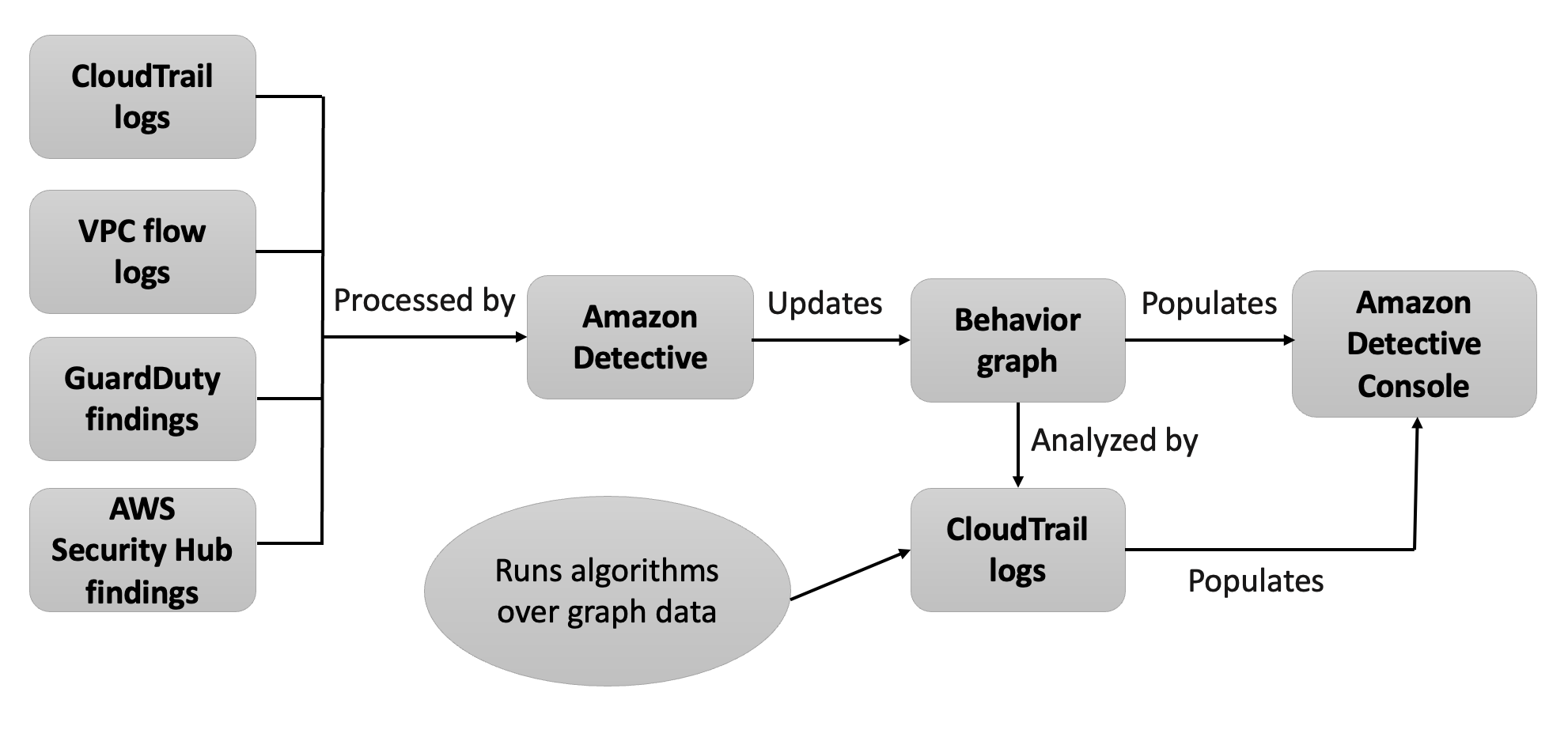How Detective populates a behavior graph
To provide the raw data for investigations, Detective brings together data from across your AWS environment and beyond, including the following:
-
Log data, including Amazon Virtual Private Cloud (Amazon VPC) and AWS CloudTrail
-
Findings from Amazon GuardDuty
-
Findings from AWS Security Hub
To learn more about the source data used in a behavior graph, see Source data used in a behavior graph.
How Detective processes source data
As new data comes in, Detective uses a combination of extraction and analytics to populate the behavior graph.

Detective extraction
Extraction is based on configured mapping rules. A mapping rule basically says, "Whenever you see this piece of data, use it in this specific way to update behavior graph data."
For example, an incoming Detective source data record might include an IP address. If it does, Detective uses the information in that record to create a new IP address entity or update an existing IP address entity.
Detective analytics
Analytics are more complex algorithms that analyze the data to provide insight into activity that is associated with entities.
For example, one type of Detective analytic analyzes how often activity occurs by running algorithms. For entities that make API calls, the algorithm looks for API calls that the entity doesn't normally use. The algorithm also looks for a large spike in the number of API calls.
Analytic insights support investigations by providing answers to key analyst questions and are frequently used to populate finding and entity profile panels.